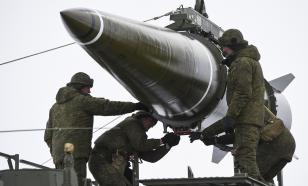Moscow’s drawbacks: The capital is like another Chernobyl
The total number of those enterprises that use radioactive substances in Russia is 65. Twenty of them are located in Moscow. This was said by Viktor Suvorov – deputy chairman of the department for Moscow's public utilities and improvement.
Suvorov advised that there were currently some two thousand organizations in Moscow, which used radioactive materials in their work, including eleven nuclear reactors. The largest nuclear wastes deposit is located on the territory of Kurchatovsky Institute, and the Ministry for Nuclear Power acknowledges this fact. This is connected with the fact that the institute was established 58 years ago for the development and realization of a nuclear project. Kurchatovsky Institute has unique physical emplacements, research reactors, nuclear storage facilities and so on. The center was built on the outskirts of Moscow, but Moscow was growing very fast, so the institute found itself within the city soon.
There has surely been a lot of spent nuclear fuel saved since 1943. But we have to mention that Kurchatovsky Institute is not the only one source of radiation in Moscow: about 60 sources of nuclear contamination are revealed in Moscow every year. Oleg Polsky (the deputy director general for ecology and environmental protection of the Moscow enterprise Radon) said that the index would most likely get worse in the coming years.
Oleg Polsky explained his forecast with the construction program in Moscow – the project of the third traffic ring, residential areas, and administrative objects that are going to be built on the places, where industrial and domestic wastes were stored. Polsky stressed out that Moscow was the only city in the whole world, where there were so many enterprises and organizations, which used radioactive substances and devices in their activities. There has not been a radiation control system in Moscow until 1960, which resulted in uncontrollable burial of dangerous substances and in the considerable contamination of the city’s territory. Specialists find some 70% of those old wastes in the areas, where new buildings are being built.
The Moscow government is trying to improve the situation somehow: over 1350 radioactive contamination cites have been liquidated in Moscow over the recent 25 years, and over 930 tons of radioactive wastes have been removed. But this is surely not enough.
The Moscow government approved the bill about the radiation security of the population. The document stipulates that the selection of construction cites should be performed taking into consideration the gamma-radiation and soil radon emission. The control of radiation doses of citizens will be performed in Moscow, as well as the level of radiation in case of a radiation breakdown, and so on. Furthermore, the bill stipulates that all radioactive substances and radioactive wastes on Moscow’s territory are subjected to the state control.
Yegor Belorus PRAVDA.Ru
Translated by Dmitry Sudakov
Subscribe to Pravda.Ru Telegram channel, Facebook, RSS!


